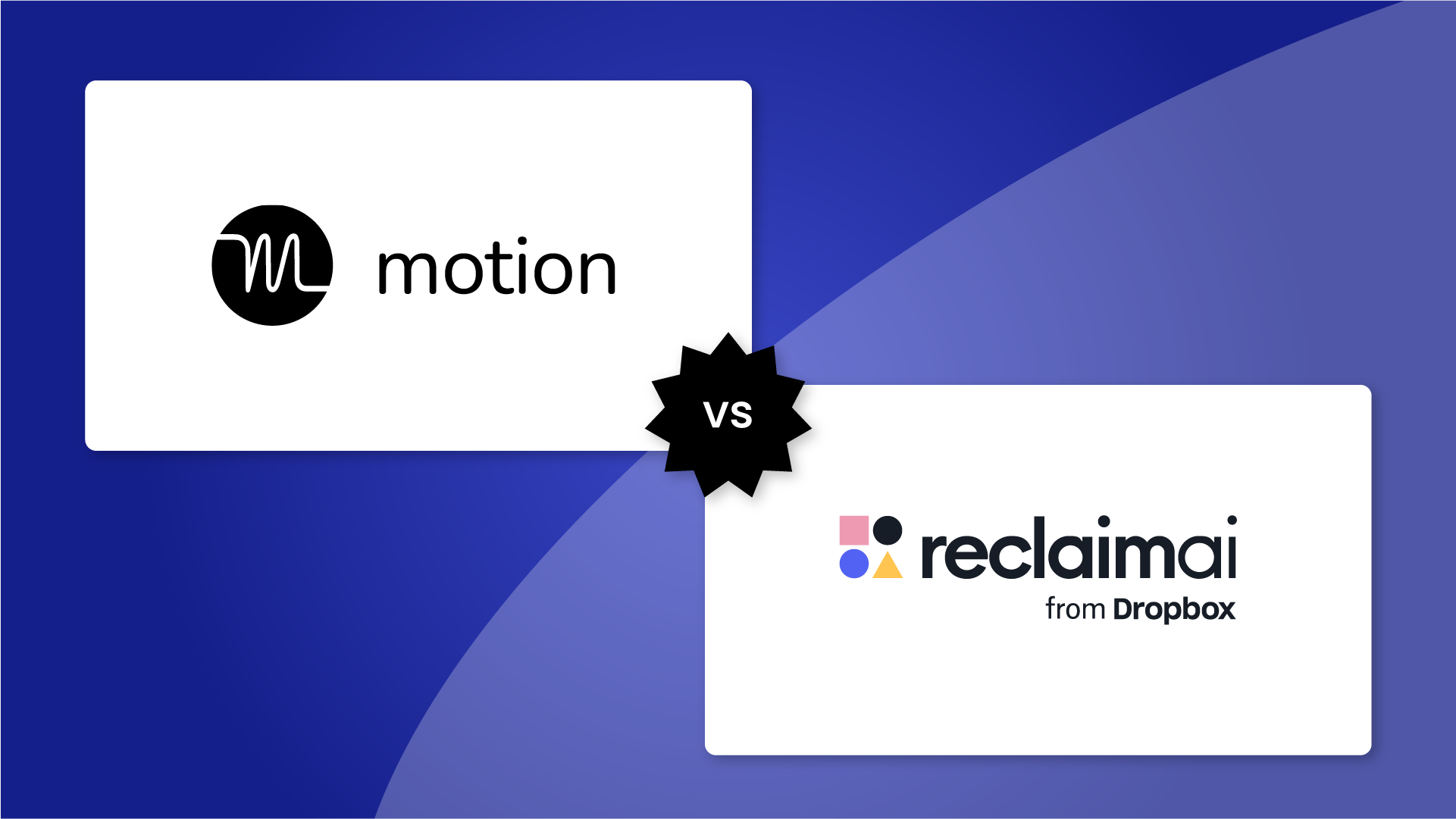The average person attends a staggering 20.6 meetings/week. This means you’re probably spending about half your week in meetings, and receiving and sending meeting invites all the time.
While meetings are indispensable for collaboration and decision-making, poorly planned communications can quickly become unproductive time sinks (costing businesses millions of dollars each year). So, how can you make your meetings more well-attended, engaging, and successful?
It all starts with your meeting invite. And don't let the simplicity of the meeting invitation email fool you. Investing time in crafting a thoughtful invitation paves the way for a valuable meeting, equipping attendees with the information they need to engage and contribute.
In this guide, we'll break down what it takes to write a successful meeting invitation email, share templates you can adapt for different scenarios, and offer tips to make your meeting request stand out in crowded inboxes. By the end, you'll be writing invitations that fill the seats for every meeting.
Why are meeting invites important?
Ever open up a meeting invite, and wonder what this meeting is even about? With meetings costing U.S. businesses up to $37 billion annually, it’s time to get our meeting invites in order so people can really decide if it’s worth their time. Otherwise, that's a lot of wasted coffee and donuts.
A well-thought-out invite does so much more than just block off time in your calendar.
- Set clear expectations: A well-crafted invitation email outlines the purpose, agenda, and desired outcomes of the meeting so everyone understands the goals and can prepare accordingly. This leads to more focused and productive discussions.
- Improve attendance rates: People are more likely to attend a meeting when they know what to expect and that their presence would be valuable. A clear and personalized meeting invite let’s people know what the opportunity is and how their input is important.
- Enhance productivity: When attendees understand the agenda beforehand, they can come prepared with ideas, questions, and solutions. This preparation streamlines discussions, prevents tangents, and ultimately saves valuable time during the meeting itself.
- Project professionalism: A well-written, organized invitation email reflects well on both you and your organization. It demonstrates respect for attendees' time and a commitment to efficient communication, setting a positive tone for the meeting.
How to write an effective meeting invite email
Ready to ditch those "reply-all" nightmares and endless back-and-forths emails just to get a simple meeting scheduled? Writing successful meeting invitation emails is easier than you think. Let's break it down:
1. The invite subject line
First and foremost, let's start with the subject line – the first very impression of your proposed meeting. This meeting invite is the gateway to getting on attendees schedules – without opening it, they probably won’t accept and attend. A strong subject line should be:
- Clear & concise: Quickly convey the purpose of the meeting without being overly wordy.
- Compelling: Spark curiosity or highlight the importance of the meeting to encourage opening.
- Specific: Avoid vague phrases like "Meeting" or "Check-in." Include relevant keywords or topics.
Examples of effective subject lines
- 1:1 meeting: "Quick Chat, (Project Name) Next Steps"
- Team meeting: "Team Brainstorm on (Project Name) Marketing Strategy"
- External meeting: "(Your Company) - (Their Company) Partnership Discussion"
- Urgent meeting: "IMPORTANT: Urgent Meeting to Address (Issue)"
- Regular meeting: "Monthly Project Update Meeting - (Date)"
Tips for crafting the perfect subject line
- Use action verbs: Words like "Discuss," "Review," or "Brainstorm" signal a clear purpose.
- Include the date: Helps attendees prioritize and plan their schedules.
- Consider a question: A relevant question can pique interest and make the email more engaging.
- Keep it under 50 characters: Most email clients truncate longer subject lines. Keep it under 50 characters for a concise subject line.
2. The invite email body
The body of your meeting invitation email is where you provide all the essential details and set the tone for the meeting. Here's how to structure your invite email body:
The opening
Start with a friendly and professional greeting. Address the recipient by name if possible.
From there, briefly state the purpose of the meeting in one or two sentences. This clarifies the context and reinforces the importance of each attendee's participation
The details
The real “meat and potatoes” of your meeting invitation email are the details. The devil is in the details, as they say.
So, make sure to always cover the five W's – who, what, where, when, and why.
- Date & time: Clearly state the date and time of the meeting. After all, how can any attend if they have no idea when and where the meeting is taking place? If you're conducting a virtual or hybrid meeting, include the time zone to avoid confusion.
- Location: For physical meetings, provide the complete address, including the building name, room number, and any special instructions for finding the location. For virtual meetings, include the meeting link or instructions on how to join the video conference. Specify the platform being used (e.g., Zoom, Teams).
- Duration: Estimate how long the meeting will last so attendees can manage their schedules and expectations.
- Attendee list (optional): If the meeting is small or if it's important for attendees to know who else is coming, list the names of participants.
Meeting agenda
All meetings should have agendas. And if you’re asking people for their time in your meeting, you should have the agenda ready for review in the body of your invite email.
- Clear structure: Use a bulleted list or numbered format to present the agenda. This makes it easy to scan and understand.
- Concise topics: Briefly describe each topic to be discussed. Avoid overly detailed explanations at this stage.
- Ownership (optional): If specific agenda items are assigned to certain individuals, indicate who will be leading those discussions.
- Preparation (optional): If attendees need to review any materials or complete tasks beforehand, mention it here and provide links or attachments.

Call to action
Finally, you want to include a CTA within your meeting invite. In this context, that typically means a polite request for an RSVP, but could also entail reviewing any relevant documents, links, or prep materials.
Here’s an example meeting invite email body template:
3. The invite email closing
A compelling meeting invitation email has a closing that leaves a lasting impression and smooth lead-up to the meeting itself. Here's how to wrap things up professionally:
Choose a closing phrase that aligns with the overall tone of your email and your relationship with the recipient. Some common options include:
- Best regards
- Sincerely
- Thank you
- Looking forward to seeing you
- Looking forward to our discussion
- Thanks in advance for your time
- Talk soon
Always include your contact information at the end of the email. This allows attendees to easily reach you if they have questions or need to clarify anything.
- Name:
- Title:
- Email Address:
- Phone Number (Optional):
Tips for crafting the perfect meeting invitation email
Beyond the basic elements, there are several additional tips you can implement to make your meeting invitations more effective and engaging:
1. Personalize when possible
Let's be real – nobody likes getting a generic, cookie-cutter email. If you're inviting a few folks you know well, or even just one person, why not make them feel special? A little personal touch goes a long way in sending a good meeting invitation.
Think back to your last conversation with them. Was there something you discussed that relates to the meeting? Maybe a shared interest or a recent win they had? Weave that into your invitation! It shows you're not just going through the motions, but you've actually thought about them and why their presence at the meeting matters.
For example:
- "Hey (Name), remember how we were chatting about (topic) last week? Well, I'm putting together a quick meeting to take a closer look and I'd love for you to be there!"
- "I know how much you're into (shared interest), so I wanted to make sure you had a seat at the table for this discussion on..."
- "Congrats again on (achievement)! Seriously impressive. I'd love to hear more about it and see how it might connect with what we're working on."
This kind of personalized approach not only makes your invite way more appealing, but also sets a positive tone for the meeting itself. People are more likely to show up excited and ready to contribute when they feel valued and included from the get-go.
2. Keep it classy
While a friendly tone can go a long way in building rapport, you'll want to strike the right balance with professionalism. It's just like what you wear for a job interview: you want to show some personality, but you also need to look polished and put together.
Stick to clear, concise language that's easy to understand. Avoid slang, jargon, or anything that might come across as too casual or unprofessional.
This doesn't mean a formal meeting invitation has to be boring or robotic! You can still be friendly and engaging while maintaining a professional tone. Just remember, you're representing yourself and your company, so put your best foot forward.
3. Get to the point
Time is precious, and nobody wants to wade through a novel just to find out when and where a meeting is happening. Respect your invitees' busy schedules by getting straight to the point.
Don't bury the lead! Put the most important details – the what, when, and where – right up front. Then, you can follow up with the agenda, any pre-meeting prep, and a clear call to action for RSVPs.
Less is more. Keep your sentences short and sweet, and cut out any unnecessary fluff.
4. Proofread carefully
You wouldn't show up to a meeting with your shirt on inside-out, right? The same goes for your emails. Typos and grammatical errors are like coffee stains on your resume – they make you look sloppy and unprofessional.
So, before you hit send, take a few minutes to give your email a thorough once-over. Look out for typos, missing words, and awkward phrasing. If you're unsure about something, don't hesitate to consult a dictionary or grammar guide or use an AI proofreading tool to catch and fix any grammatical errors immediately. You can even read your email aloud to catch any clunky sentences or errors your eyes might have missed.
A polished, error-free email shows that you care about details and take your work seriously. It's a small investment of time that can make a big difference in how you're perceived.
5. Don't wait until the last minute
Imagine getting an invite to a party an hour before it starts – not cool, right? The same goes for meetings. Don't spring your invitation on people at the last minute.
Give your invitees plenty of heads-up, especially if it's a recurring meeting or requires preparation. This shows respect for their time and allows them to plan accordingly.
The sooner you send the invite, the sooner you can start getting those RSVPs rolling in. And who doesn't love a well-organized meeting with confirmed attendees? So do yourself (and everyone else) a favor and send that invite early!
6. Use a clear call to action
Don't leave your invitees guessing what to do next. Tell them exactly how to respond. Whether it's an RSVP by a certain date, clicking a link to confirm their attendance, or submitting a question beforehand, make it crystal clear and super easy to do.
For example, you could say:
- "Click here to RSVP by (date) and let us know if you can make it!"
- "To confirm your attendance, simply reply to this email with a 'Yes!' by (date)."
- "If you have any questions or topics you'd like to add to the agenda, please let me know by replying to this email."
A clear and compelling CTA not only boosts your response rate but also helps you gauge interest and plan your meeting more effectively. So don't be shy about telling people what to do next – they'll appreciate the guidance!
7. Include an email signature
Your email signature is the digital equivalent of your business card – it's a professional touch that leaves a lasting impression. It's your chance to not only provide your contact information but also showcase your personal brand or company identity.
A well-designed signature should include:
- Your full name and title
- Company name and website (hyperlinked)
- Phone number (optional)
- Social media links (LinkedIn, Twitter, etc. – if relevant)
- A professional headshot or company logo (optional)
For a polished and cohesive look, consider using an online signature generator. These tools allow you to easily create custom signatures that align with your branding and personality.
Meeting invitation templates
Set your meetings up for success with effective invites 🏆
There you have it! You've officially leveled up your meeting invitation game. With these tips and tricks, you're now equipped to craft emails that not only get people to show up but also get them excited about the meeting. No more boring, generic invites that get lost in the shuffle. Your emails will be clear, concise, personalized, and oh-so-professional.
A great meeting starts with a great invitation. So go forth and conquer those inboxes! And who knows, you might even start getting thank you notes for your awesome invites. (Okay, maybe that's a bit of a stretch, but hey, you never know!)



































